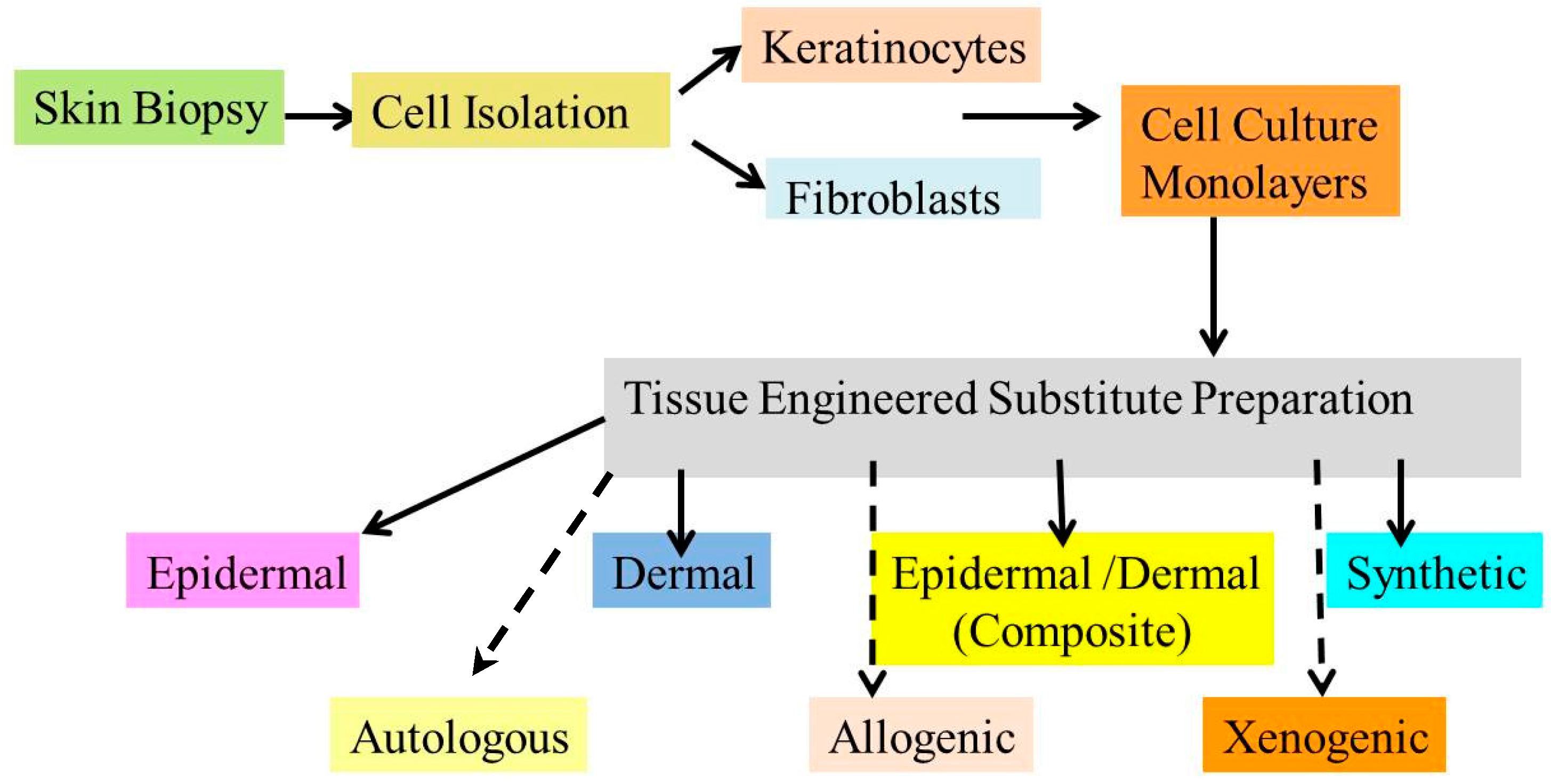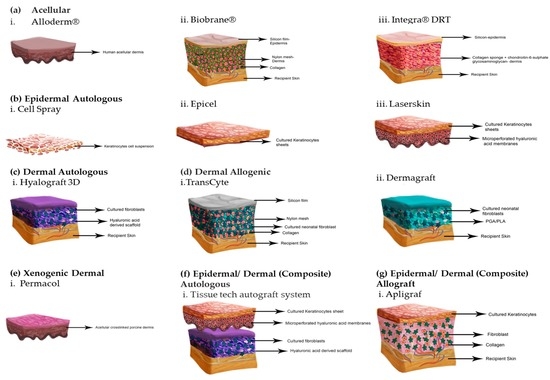Advances in Skin Regeneration Using Tissue Engineering :
Tissue engineered skin substitutes for wound healing have evolved tremendously over the last couple of years. New advances have been made toward developing skin substitutes made up of artificial and natural materials. Engineered skin substitutes are developed from acellular materials or can be synthesized from autologous, allograft, xenogenic, or synthetic sources. Each of these engineered skin substitutes has their advantages and disadvantages. However, to this date, a complete functional skin substitute is not available, and research is continuing to develop a competent full thickness skin substitute product that can vascularize rapidly. There is also a need to redesign the currently available substitutes to make them user friendly, commercially affordable, and viable with longer shelf life.

Approaches for Tissue Engineering:
Different strategies, such as injecting growth factors and extracellular matrix, are being adopted towards tissue re-growth and wound healing. Some of the recent strategies are listed below.- Cell Cocultures
- Cultured Epithelial Autografts
- Tissue Engineered Skin Substitutes
Tissue engineered skin substitute preparation. Bold lines indicate cell type for tissue engineered substitute and dotted lines indicate cell source

Types of Skin Substitutes:
- Acellular Skin Substitutes
- Cellular Allogenic Skin Substitutes
- Cellular Autologous Skin Substitutes
- Commercially Available Skin Substitutes

Tissue engineered skin substitutes
"Thanks for sharing useful information.. we have learned so much information from your blog..... keep sharing
ReplyDeleteDigital Marketing Training Course in Chennai | Digital Marketing Training Course in Anna Nagar | Digital Marketing Training Course in OMR | Digital Marketing Training Course in Porur | Digital Marketing Training Course in Tambaram | Digital Marketing Training Course in Velachery
"